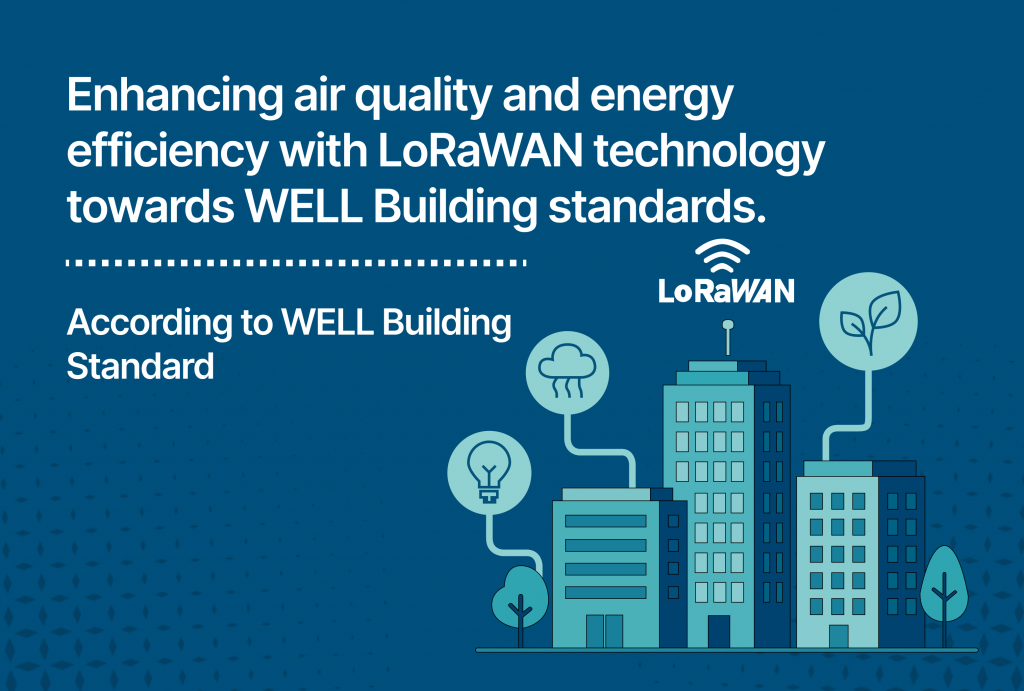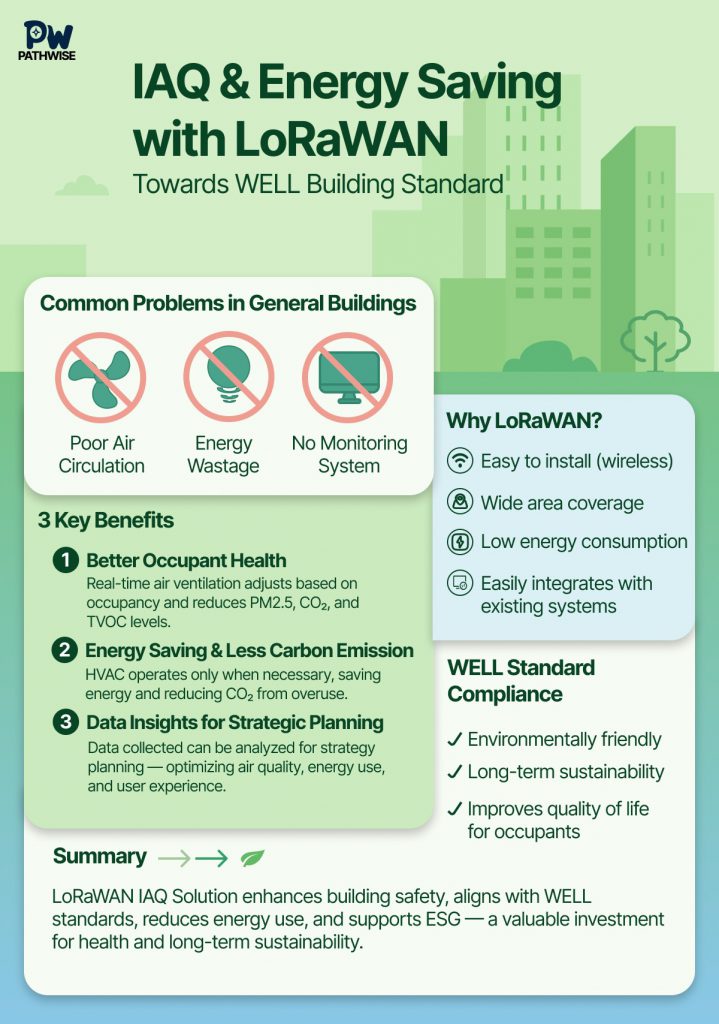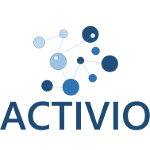
Introduction: From Government Policy to Health-Centered Building Design
On November 21, 2022, the Department of Health under the Ministry of Public Health of Thailand announced the “Recommended Indoor Air Quality (IAQ) Parameters for Public Buildings.” This initiative provides guidance to building managers on maintaining indoor air quality that supports occupant health. Key recommended values include:
| Parameter | Recomme |
|---|---|
| Temperature (°C) | 25–26 |
| Relative Humidity (%) | 50–65 |
| Air Flow | < 0.3 m/s |
| CO₂ | 1,000 ppm |
| PM2.5 | ≤ 25 µg/m³ |
| PM10 | ≤ 50 µg/m³ |
| TVOC | ≤ 1,000 ppb |
| CO | ≤ 9 ppm |
These standards align with the WELL Building Standard, which emphasizes human health and wellness in building design. It is widely adopted globally as a framework for developing sustainable, healthy, and green buildings.
References:
- Activio Facebook Blog Post: Indoor Air Quality (IAQ) Regulation Announcement
- Department of Health Announcement on IAQ Parameters for Public Buildings, B.E. 2565 (2022)
Case Study: LoRaWAN IAQ Solution at NEX Mall, Singapore

At NEX Mall in Singapore, 35 IAQ sensors were installed throughout the building to collect real-time air quality data using LoRaWAN, a low-power wide-area network (LPWAN) wireless technology.
Data from the sensors is integrated into:
- A centralized dashboard for monitoring air quality status
- The existing Building Management System (BMS), enabling automated HVAC adjustments based on real-time occupancy and air quality
Key challenge: Integrating new IoT technology with an existing BMS, a common hurdle in large buildings undergoing modernization without major infrastructure changes.
Solution Implementation:
The project involved installing 35 LoRaWAN-based wireless IAQ sensors to monitor key environmental indicators. The data is transmitted to both a digital dashboard and the existing BMS. A custom software layer was then developed to analyze IAQ and occupancy data, enabling the HVAC (Heating, Ventilation, and Air Conditioning) system to automatically adjust operations for optimal comfort and efficiency.
Reference: NEX Shopping Mall Implements Indoor Air Quality Monitoring – UnaBiz
Benefits of a Smart IAQ System
1. Improved Occupant Health
- Enhanced air circulation during high-occupancy periods (e.g., lunch breaks, weekends)
- Safer environment for both staff and visitors
Enhancing Health and Safety:
The system significantly improves indoor air circulation efficiency, allowing building managers to respond effectively to changing air conditions—especially during peak occupancy periods—by increasing ventilation. This creates a safer and healthier environment for visitors, tenants, and staff alike.
2. Energy Savings + Carbon Reduction
- HVAC operates based on actual usage, avoiding unnecessary energy consumption
- Smart balance between bringing in fresh air and minimizing energy loss
- Supports sustainability goals and reduces CO₂ emissions
The data-driven HVAC/ACMV system ensures:
- Optimal energy efficiency
- Reduced environmental impact
- Intelligent ventilation strategy based on real-time IAQ and occupancy data
3. Data-Driven Building Management
- A single sensor can generate up to 1,440 data points per day
- This enables deep analysis of building usage behavior and supports the development of effective energy policies
Smart Building Management Powered by Data:
- The system measures IAQ every minute, providing up to 1,440 data points per day per sensor
- This delivers a detailed and continuous overview of indoor air quality
- When integrated with the Building Management System (BMS), IAQ data allows the HVAC system to automatically adjust operations—maintaining an optimal balance between thermal comfort, excellent air quality, and efficient energy usage
Why Choose LoRaWAN?
- Easy installation – no need for new wiring throughout the building
- Long-range coverage – ideal for large complexes and malls
- Low power consumption – suitable for 24/7 sensor operations
- Seamless integration – easily connects with existing systems (BMS, HVAC, cloud)
Alignment with WELL Building Standard
This IAQ solution supports multiple WELL features, including:
| WELL Feature | Description |
|---|---|
| A01 | Fundamental Air Quality |
| A05 | Enhanced Ventilation |
| A08 | Air Quality Monitoring & Awareness |
| T01–T05 | Thermal Comfort, Humidity, and Energy Optimization |
References:
- https://standard.wellcertified.com/features
- Detailed guidance on A01 – Air Quality (Precondition) and A05 – Enhanced Air Quality (Optimization), explaining thresholds and monitoring requirements: “Manufacturer’s guide to WELL” (includes A01 & A05 details) 🔗 Reference link:
Conclusion: From Policy to Technology to Healthier Buildings
The LoRaWAN IAQ Solution not only enhances indoor safety but also acts as a key enabler for global standards like WELL, while reducing long-term energy costs. It’s a forward-thinking investment that meets ESG goals and significantly improves the quality of life for building occupants.

